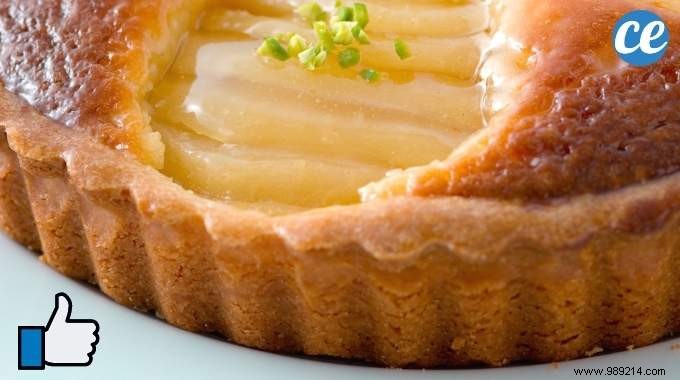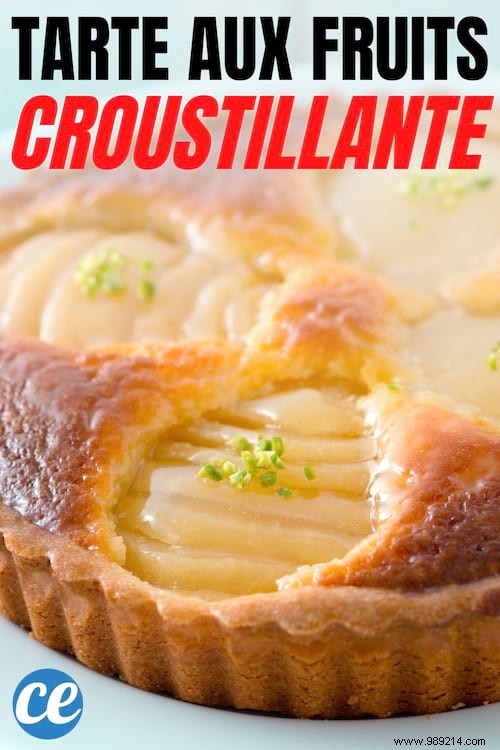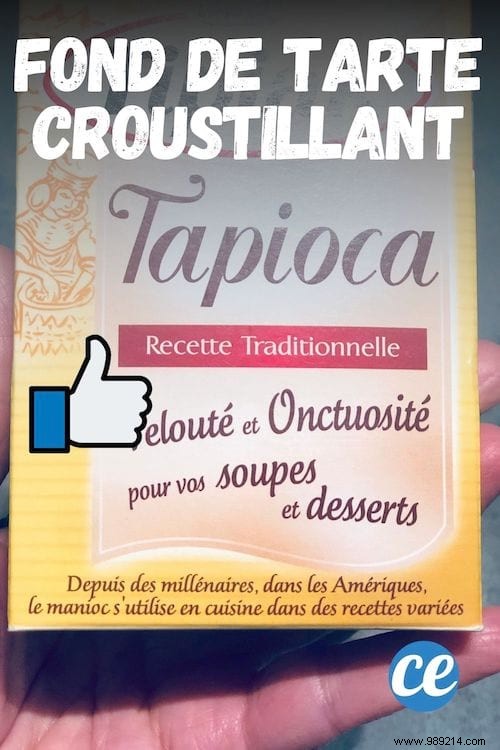
Fed up with fruit pies with a very soft dough that has no cooked?
It's true, when you make a fruit pie, the dough is often soggy because of the fruit juice...
Today, I'm sharing a grandmother's trick with you to keep your dough crispy. Mmm!
I tried this trick with a pear pie... and it's magic! The bottom of the pie remains crispy.
So, how to easily absorb fruit juice on a pie?
The trick is to sprinkle tapioca on the dough before baking . Watch:

1. Roll out your pie dough.
2. Sprinkle tapioca over the dough.
3. Arrange your filling and fruit on top as usual.
4. Bake the pie as directed in the recipe.
There you go, the dough for your fruit pie is now very crispy :-)
Easy, fast and efficient, right?
No need to cook it longer and risk burning it!
And this trick also avoids having to put the dough in the oven before.
Your pie crust is just as crispy as it should be, even with juicy fruit.
In addition, the dough remains light!

It works with homemade pie dough, but also store-bought ones, fresh or frozen.
You will see that it is effective with all kinds of savory or sweet, broken, shortbread or puff pastry.
You can try with any winter or fall fruit.
For example, it works with apples, pears, bananas, kiwis, pineapples.
And of course it also works with summer fruits.
It is very effective with strawberries, raspberries and all red fruits, apricots, peaches and also mixed fruits...
You can also use this trick with vegetable pies (or quiches) that release a lot of water.
This is particularly the case with zucchini, leeks or tomatoes.
If the pie dough becomes soft, it is because of the fruit juice. The fruits are full of water and sugar.
The problem is that the fruits release all the water during cooking.
This water soaks the dough and makes it soft.
And if you increase the cooking time to let the water evaporate, you run the risk of burning the pie and its filling.
Which isn't very good either...
Tapioca has the power to absorb the juice and water released by the fruits.
It's like proofing your pie shell. Clever, isn't it?
And rest assured, tapioca (or cassava flour) leaves no particular taste! The flavors of your pie will not be distorted.
Tapioca is a starch that comes from cassava.
It is a bitter root that grows in Africa and Latin America. It is formed from starch.
Did you know that before being dried and processed, cassava is toxic?
Tapioca is traditionally used in Africa in many dishes.
In Europe, it is often used as a thickener for sauces or soups.
In Japan, it is often used in the form of small balls, for desserts or dishes:the pearls of Japan.
In fact, they are tiny balls of cassava starch.
Whatever its use, its taste is neutral and it has the particularity of swelling when cold.
Have you tried this grandmother's trick for a crispy pie? Let us know in the comments if it worked for you. We can't wait to read you!